#its time for some glorious glorious payoff to all the tension
Explore tagged Tumblr posts
Link
Chapters: 18/? Fandom: 僕のヒーローアカデミア | Boku no Hero Academia | My Hero Academia Rating: Explicit Warnings: Graphic Depictions Of Violence Relationships: Aizawa Shouta | Eraserhead/Yamada Hizashi | Present Mic, Dabi | Todoroki Touya & Yamada Hizashi | Present Mic, Aizawa Shouta | Eraserhead & Dabi | Todoroki Touya, Midoriya Izuku & Yamada Hizashi | Present Mic, Aizawa Shouta | Eraserhead & Midoriya Izuku, Dabi | Todoroki Touya & Shigaraki Tomura | Shimura Tenko, Midoriya Izuku & Shinsou Hitoshi Characters: Yamada Hizashi | Present Mic, Aizawa Shouta | Eraserhead, Dabi | Todoroki Touya, Shigaraki Tomura | Shimura Tenko, Midoriya Izuku, Shinsou Hitoshi, Tsukauchi Naomasa, Kayama Nemuri | Midnight, Iida Tensei | Ingenium, Nedzu (My Hero Academia) Additional Tags: Pre-Canon, Alternate Universe - Canon Divergence, Angst with a Happy Ending, Enemies to Friends to Lovers, Case Fic, Deaf Yamada Hizashi | Present Mic, Villain Aizawa Shouta | Eraserhead, Parental Aizawa Shouta | Eraserhead | Dadzawa, Past Child Abuse, Canon-Typical Violence, Found Family, Slow Burn, Eventual Smut, Fights, Fist Fights, Hurt/Comfort, Yamada Hizashi | Present Mic-centric, Hurt Yamada Hizashi | Present Mic, Post-Traumatic Stress Disorder - PTSD, no beta we die like sir nighteye Summary:
Hizashi is spiralling; his hero career is on the brink of collapse, no radio station will give him a shot and he isn’t sure how much more he can take.
When people start turning up beaten half to death, they lead him to an underground quirk fighting ring. Could it be the big break he needs to save his career or will the mysterious Referee show him something better?
#our slow burn is blazing lads#its here!#the moment weve all been waiting for!#its time for some glorious glorious payoff to all the tension#coming out of my cage and ive been doing just fine.txt#go beyond plus ultra#erasermic#aizawa#aizawa shouta#eraserhead#yamada hizashi#present mic#mha#bnha
12 notes
·
View notes
Text
Favourite Songs of 2024: 19 - 11

If you've read one of these already you know the drill, if you haven't then it's really not that complicated. Previous entries can be found here, here, here and here. Read on as we approach the ALL IMPORTANT TOP 10...
19. Doechii - Wait
youtube
While busily dusting herself down from the wreckage of Katy Perry’s ill fated 143, Doechii found time to make some fantastic music on her own this year. Wait is the kind of slinky neosoul jam that wouldn’t have sounded out of place on Doja Cat’s Scarlet album, combining smooth RnB vocals with tight rapping in a plaintive tale about holding things together. I’m a sucker for this kind of classic era hip hop throwback and Wait is as good as any yr likely to hear.
18. Lizzy McAlpine - I Guess
youtube
While she wasn’t able to build commercially on last year’s surprise hit Ceilings, Lizzy made huge artistic jumps in 2024, mastering the kind of wistful retro sound that informs I Guess and helps to make it such a great song. While she's largely remade herself as a 70s folkie, there’s something quite widescreen to the sound here in places that feels more of a piece with a modern production. But her pleading, soft toned voice remains her best attribute, telling a story of desperate dating where the payoff feels more resigned than triumphant.
17. Eminem - Houdini
youtube
There are things that absolutely make me wince about this song - Eminem’s current era may be high concept and character driven but it still has a strong “does this offend you yeah?” element to it that made me switch his album off inside 3 minutes. But ropey as some of its schtick undoubtably is, Houdini really is an absolute banger, full of gross out and extremely bad taste jokes of course but also living up to his claims of being a ‘lyrical technician’, as he recaptures the goofy cartoonish energy of his early material while exerting the kind of performance control that allows him to ramp up the comedy, drama or tension at the drop of a single word.
16. Taylor Swift - The Tortured Poets Department
youtube
Taylor’s all conquering *counts on fingers* 11th album was fine but a little too predictable by my reckoning and ran out of steam a bit in the 2nd half (as many of her records are prone to do). But when it did catch fire there were still some terrific songs and the title track was amongst the best of them. It channeled her newly verbose lyricism into a warm, diaristic romance with one of her finest melodies, a song which sparkled and burned with a nostalgic twinkle, as well as the sense of a life being lived that felt a lot more enviable than on some of her other songs this year.
15. Sonny Fodera Ft Jazzy, DOD - Somedays
youtube
Chart dance bangers have changed very little in the last 30 years: take a pounding beat, flashes of house piano, some generically uplifting lyrics and you may well have a hit. And yet it’s still possible to make these elements go extremely hard and Sonny Fodera - building on last year’s similarly terrific Asking - is the latest producer to really nail the formula. Jazzy’s vocal has the right mix of pathos, hope and yearning, the tension builds and dissipates in all the right places, but the thing that makes me love this unconditionally are the absolutely pummelling drops that run into the chorus, which blow me away every time this comes up on the radio and have given me life on so many occasions this year.
14. Charli XCX ft Billie Eilish - Guess remix
youtube
Possibly the crowning moment of the year in pop was hearing this daft, sleazy club banger crash into the charts at #1, the peak of a glorious ascent which had been rising steadily since the spring. Reminiscent of the kind of forbidden sing-song that you might hear in a school playground, Charli and Bilie’s back and forth adds an extra dimension to the already colossal OG version, spiking it with enough “what if?!” energy to set the internet alight for weeks on end.
13. Tate McRae - 2 Hands
youtube
While my Tate fandom has now reached mildly embarrassing levels, late entrant 2 Hands confirmed to me why she's still worth it all. It’s another iteration of her charming ‘tough but cute’ act, with a chorus just as strong as that of 2023 megahit Greedy, but this time as part of a more substantial song that works better as a start to finish listen. The breaks have a loose rattle that drift twds hip hop territory but there’s a space age zip too that feels new for her, adding extra energy to the already punchy production. And yet possibly the most intriguing aspect of all this is the “not one, not three” line in the extended chorus, posing important questions about exactly how many hands Tate’s exes have had?!
12. Beyoncé - Ya Ya
youtube
Beyoncé’s project to rediscover country music’s hidden past took a detour with this ramble thru a bunch of fun 60s RnB tropes. Ya Ya ties together Good Vibrations, Genie In a Bottle and These Boots Are Made for Walking as a way of reuniting some lost heritage, in a banging hard times anthem which, crucially, is a catchy song that you’d actually want to listen to (not always a given on Cowboy Carter). One of the most kinetic, powerful and often downright silly records released all year: if only all of her album had channelled this kind of energy.
11. Camila Cabello Ft Lil Nas X - He Knows
youtube
2024 was a tough year for Camila and Nas: both iconic hitmakers of the late 10s who made long awaited comebacks, both of which fell flat on their asses. Camila did at least get her album out tho, the flawed but fascinating “C, XOXO”, and this was my favourite song from it: a glitchy, minimalist pop banger where the momentum of two terrific vocal performances pull everything along in their train, the better to show that there was always more to them than star power alone.
#Youtube#Beyoncé#Tate McRae#Billie Eilish#Charli XCX#Lizzy McAlpine#Doechii#Sonny Fodera#Jazzy#D.O.D.#Taylor Swift#Eminem#Pop music#Dance Music#Hip hop#Rap#RnB#Singer songwriter#Camila Cabello#Lil Nas X#SOTY#Songs Of The Year#Songs Of 2024#Best Of 2024
8 notes
·
View notes
Text
Review-Love Death + Robots (Pt 1. Episodes 1-4)
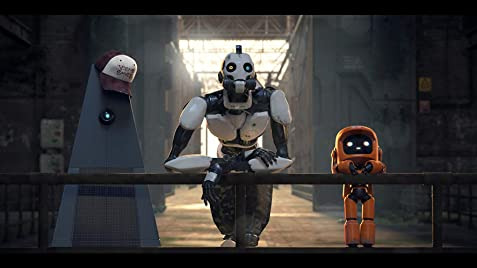
So here we are again. You, dear readers, and I, a mostly defunct tumblr page. I was thinking...I’ve written a few reviews on here before, and I’ve rather enjoyed myself to be honest. So until RP starts up again for me, I’m going to grab some popcorn and start reviewing some of the media I’ve been indulging in during this exceptionally fun pandemic we’ve all been saddled with (and are becoming increasingly more and more used to as time goes on). Here we go!
Spoilers incoming! I don’t like to discuss a show without going through it entirely-no stone unturned. You have been warned!
Love Death + Robots is a compilation series-each episode is self-contained content, based on what I have experienced thus far. The content varies wildly from cute and sweet to surreal, to horrific. For right now I’m going to stick with the first four episodes since they are fresh in my mind.
Episode 1: Three Robots
Three robots shows a short adventure shared by, you guessed it-Three robots exploring the crumbling remains of human society. It comes across as three tourists making their way through an area that they are completely unfamiliar with, attempting to define and understand elements of the environment as humans once did. Their analysis and attempts to understand not only human culture, but also basic human biology, were entertaining to say the least. Each robot has flair, character, and a their own take on humans and humanity. Over the course of the episode, the fall of mankind is referenced a few times, being initially explained as a mass extinction due to environmental disasters (global warming is probably a factor-one of the buildings has an entire ship sticking out of it). However, the twist ending throws that whole theory into question once the cat that has been accompanying the robots for the last leg of their journey reveals itself as capable of speech. And, interestingly enough...being in possession of opposable thumbs. It was certainly unexpected, and a bit odd-the cat (and its many, many brethren) manage to finish out the episode by convincing the robots that if the robots do not pet them, the cats may explode. I will say that the ending, though it was rather silly and fitting with the tone, felt like an out of place twist intended mostly to give a bit of closure to a story that had no real need to have an ending. It felt a little out-of-left field, at least to me.
This first episode, I think, is one that I could recommend to a much more general audience than almost all of the other content of the show. It’s whimsical and cute, despite inhabiting such a grim setting (and grim it is-post apocalyptic is not taken lightly here. There are plenty of corpses, some skeletal and some not quite so much. At least one of them appears to have died by suicide). I found it to be a nice addition and a good introduction to ease people into the tone of the show. Definitely give this one a watch, even if the ending sort of comes from nowhere.
Episode 2: Beyond the Aquila Rift
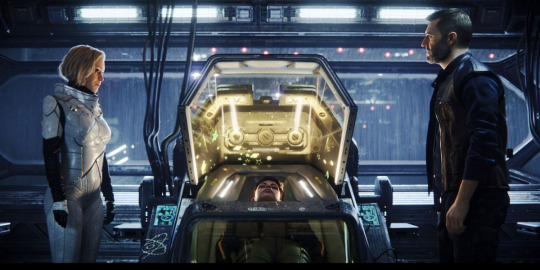
This episode was definitely a change of pace from the first. It begins as a high science fiction story starring a hunky, middle aged man and his two crewmates, making some sort of cargo run (?) through a wormhole of some kind, but promptly finding themselves in a completely different place from what they expected. Hunky space captain wakes up first, finding that he is greeted by an old friend (read: lover) of his, who explains that there was a navigation error that led them off course-way off course. They’re in a completely different area than they expected. The ship’s navigator wakes as well, swearing that there couldn’t have been an error in her calculations, but seems ill and is placed back in her future tech cryopod to rest. Space captain man then bangs it out with his ex-lover (Greta) in a scene that was almost definitely written by a man, and she reveals to him that she lied, and that him and his crew are actually hundreds of light-years further off course than they had thought they were, basically dashing any hopes that he could have of returning to his old life. The two then wake the navigator again, who immediately starts ranting that ‘Greta’ isn’t who she says she is. At this point, enough clues have been given that the captain catches up with the audience (it was all a simulation the whole time), and he confronts Greta, demanding that she reveal herself as she truly is. She does, after some prodding-and the captain finds himself in an infested husk of a ship, aged and haggard, obviously dying of starvation. Greta reveals herself as a lovely spider-beast, and the captain wakes up from his pod again-back in his comfortable illusion once more.
I love the premise of this one. Crazy aliens and shit like this is a huge draw for me-sci-fi horror is probably my favorite subgenre of horror when it’s done well. I would count this episode as doing it pretty well. They don’t go into much techno-babble, which I think is a pitfall for some sci-fi stories. The writers are well aware that we aren’t spending too long in this world, so we don’t need to know much about the rules under which it operates outside of ‘computer mistake your ship fly here.’ The twist ending didn’t end up being too much of a twist-in my opinion there were too many clues given throughout the episode to make it that much of a surprise that things weren’t as they seemed. The odds of this man meeting his ex-lover in the infinitesimal reaches of space just by chance were a bit too impossible to make it believable-and the navigator was far too convinced that her work couldn’t be incorrect. In the end, it was an expected twist, but still pretty jarring. Execution is pretty good overall though-and the sex scene is pretty decent as well, even if its strictly a dude-fantasy thing. Also, call me a sucker for cool looking beasties, but I adore the design on spider-Greta. That’s a lady right there for you.

Episode 3: Ice Age
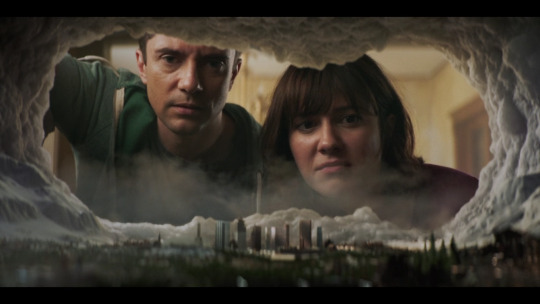
The only live action episode I’ve seen so far-this one gives an *entirely* different tone than the majority of the other episodes in the series. Topher Grace and Mary Elizabeth Winstead happen upon a lost civilization that exists entirely within their refrigerator. They watch in awe as it develops incredibly quickly-hundreds of years passing within the civilization in roughly an hour or so of real time. What starts in the morning as a town in the viking ages eventually develops into a modern society, almost destroys itself with nukes, and then rebuilds from the ashes into a fully futuristic society that quickly ascends beyond physical form, appearing to disperse itself into the cosmos, no longer bound by such petty rules as the laws of physics. A disappointed Topher asks if they’ll return-to which he receives a sad ‘no’ from his partner. It seems all is lost, and the couple go to bed for the night-only to find that the cycle has restarted overnight, and they probably won’t be able to keep any frozen chicken in the freezer for quite some time.
This one is probably one of my favorites of the series so far. It’s fairly well acted, but the real beauty of the episode is getting to watch the mini-civilization develop itself in a glorious time lapse-the work that must’ve gone into it must have been monumental, to be honest. The final product certainly felt that way, in any case. What I also found fascinating was a specific scene in which the protagonists were abandoned in place of some of the tiny denizens of the lost civilization-which made me realize exactly how slow the ‘normal sized people’s’ actions must have looked to the diminutive people of this rapidly developing society. Reminiscent of the earth’s motion in relation to our own perception-and reinforcing the concept that to an individual, perception is everything.
Episode 4: Sonnie’s Edge

This episode opens with three people transporting mysterious cargo into a heavily guarded complex, quickly encountering and interacting with a ‘bigwig’ of sorts with a beautiful woman on his arm. Through context clues the audience is easily able to discover that the three (pictured above) are here for a fight-and that their cargo is their fighter, a living creature of obviously immense proportion. The bigwig asks the team to throw the fight, and they refuse, even after he offers a large amount of money. (It’s worth mentioning that during this scene, ‘Sonnie’, the leader and controller of the beast fighter, shares an EXTREMELY homosexual gaze with the bigwig’s beautiful lady friend. Don’t think I didn’t notice the setup, because I definitely noticed the payoff, even though it was rudely interrupted). Sonnie and her teammates enter the ring, setting up as it appears that she will be piloting her fighter in some way. Her opponent is also introduced, though he is hardly important in the story-imagine a cake of beef with a big sticker on him that says ‘mysogyny’ in bold print. What follows is one of the most brutal fight scenes I’ve seen in animation (this is just my personal opinion though). These creatures fucking tear each other to shreds, with Sonnie’s beast only just barely emerging as the victor, tearing the opposing fighter’s head clean from its body. The bigwig is obviously angry, as is Sonnie’s opponent, and Sonnie and her team retires to a hotel room of sorts, with the exception of Sonnie-who slips away into the room that houses her fighter, promptly encountering the beauty from earlier! (Payoff time)..and it gets gay. Fast. I love me some wlw content, and there’s some nice tension here, right up until the beauty stabs Sonnie through the head. Rude. The bigwig reveals himself, which was a bit of a surprise-the part of me that hadn’t seen much of this show yet was hoping for a fluffy little happy ending. It wasn’t to be though..after the beauty crushes Sonnie’s skull, the two promptly realize that ‘Sonnie’ wasn’t Sonnie at all-just some biotech. The *real* Sonnie...was the fighter, the whole time. Who promptly makes short work of both the beauty and the bigwig, (implied), in what I can only describe as the most satisfying moment in the series that I’ve seen thus far.
This was easily my favorite episode of the show, and has continued to be, and I assume will continue to be my favorite through the rest of the series. It’s not just because of the lesbian rep (my people!), or the misogynists getting fucking destroyed, but the strength of the reveal, the choreography of the fight scene, and the *power* of the protagonist. I love her. I love her sooo much. We are seamlessly introduced into the world, shown a woman who has been beaten, scarred, faced sexual abuse, and she remade herself into a being of pure power. She fought back, and *look how she fights back*. I cannot describe just how much of a cheer-worthy moment it was to watch the smug smile be summarily wiped from the face of the bigwig. I *love* seeing a villain who has full confidence in their victory suddenly realize that they don’t have the upper hand anymore...and that they are, in fact, absolutely screwed. This was one of those wonderful, wonderful moments, and I can think of nobody more deserving than this villain of being torn to shreds. This was an A+ episode for sure-100% recommend this one for anyone who can handle a bit of gore.
Thank you so much for reading! This is only part 1...more to come!
#ooc#not ffxiv#review#show review#tv show review#love death and robots#love#death#robots#animation#sonnie's edge#ice age#beyond the aquila rift#three robots#wlw#lesbian
13 notes
·
View notes
Text
Road to Berlin’s Episode 12 Is a Spectacular Finish to a Spectacular Show

It was damn good!
After the slightly tame setup Episode 11 provided, it fell to Episode 12 to deliver the payoff not just to the finale that Episode 10 started, but also to wrap up the overarching story of the entire season. And oh boy, did it do just that!
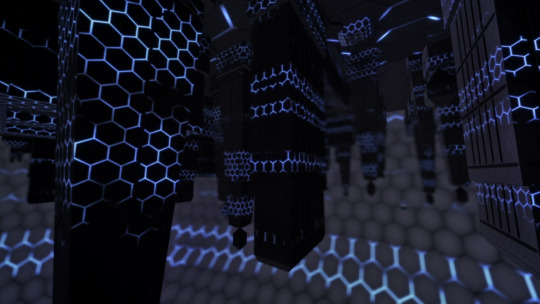
First, let’s talk about our favorite looming antagonists with barely any world-building, the Neuroi! Well, they once again upped the creepy factor by replicating World Capital Germania. How they managed to do this is still unclear, as the city never left the planning stage; it truly does seem like the Neuroi don’t just consume for sustenance or whatever, but also that they can replicate whatever they find in the territory they conquer. Of course, none of this matters much to the story at hand, but it does give us a tiny bit of world-building on them, and it would also explain some of the more bizarre Neuroi designs. Do you remember the Cube Neuroi? I do.
I was also intrigued by this former emperor of Karlsland who designed the plans for Germania. Whoever they were, they were forced to step down, but this raises all kinds of questions. When did this happen? How long has Emperor Frederick IV been in power? What does the mere existence of these plans imply about Karlsland’s history?
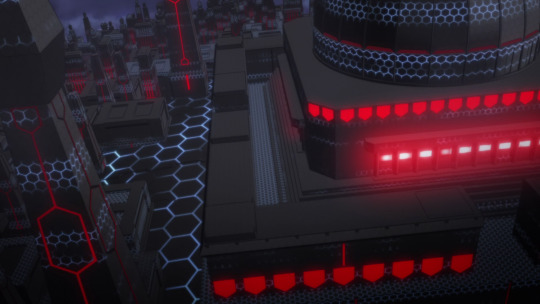
By the by, the building that was never in the plans seems to resemble the Great Hall, which was, in fact, shelved due to the start of WW2. Strike Witches occasionally gets some stuff hilariously wrong, but much of the research definitely seems on the money.
See, as far as I know, Nazism doesn’t exist in Karlsland. (Actually, that’d be pretty awkward for Karlsland, with the 501st’s logo being the way it is...) Judea was wiped out by Neuroi in the year 29; this, and several other differences in the world’s history, produced a different world than the one we know. (See the Strike Witches Historical Timeline for more information.) Culturally, Karlsland is far more akin to Imperial Germany, but transplanted into the 1940s and borrowing some iconography and designs.
There WAS tension in Europe before the Neuroi showed up and forced everyone to unite against a common enemy; would that have been enough incentive to create these plans, as well as structures like the Flak Tower? I hope we’ll find out someday. Either way, the fact the Neuroi created such an intricate city-shaped structure based on nothing but plans on paper is pretty terrifying. What else did the overrun countries have lying around when they were invaded?
Right, well, enough about the ancillary stuff. Let’s talk characters!

And cutting right to the chase: Shizuka definitively earned her spot on the team this episode. Yes, I know she technically earned it in the Movie at the earliest, and I guess Episode 10 at the latest. But Episode 10 still left me a bit wanting, as it was part of the process of building up to Shizuka’s turning point as a character. But now we reached that moment at long last, and it was everything I’d hoped to see.
First, RtB shows us how far she’s come. Her determination is nothing short of epic; she’s grown so much since her first engagement in the Movie, and nowhere is that more obvious than here. She lands a difficult shot on the bomb while flying a Striker her magic can’t handle, to the point where it’s physically hurting her to breathe. And then, she sees Yoshika trapped down below, and she finally passes the point of no return.

For the entire season, Shizuka’s been utterly obedient when it came to orders. As soon as someone dropped that o-word, she’d stop whatever action she was entertaining and went along with what she was told, even if it didn’t sit entirely well with her at times. She still does that at first, actually. But then, she finally sees something she can’t walk away from, and she decides to risk her own life to protect the girl who always throws herself into danger for others.
She saves Yoshika’s life, and even though she’s definitely not sounding well, she then takes up the fight in her friend’s defense without a single ounce of hesitation. Her switch from defense to offense is almost explosive; no talking, no checking on Yoshika, just straight-up switching on a dime. And her valiant stand is successful!
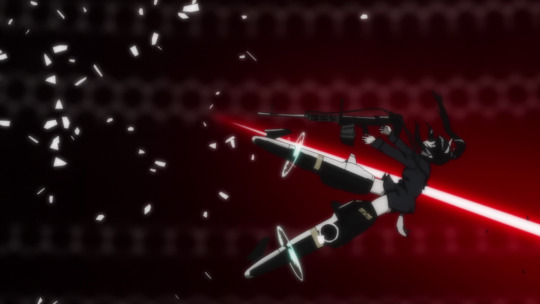
Until this happens, and once again I have to commend everyone involved in RtB on the gravity of this scene. Shizuka’s injury is devastating. The cinematography is chilling and incredibly well done: the way the beam punches through the profile shot of her body; how the beam takes all the colors with it as it leaves the screen, monochrome swiftly washing over the scene in its wake, Shizuka already pale; the trails of blood; the dilated eyes. They don’t show her crash, but it sounds awful. And then there’s the blood, positively pouring out of the hole in her body, spilling out until it even reaches Yoshika’s knees, a symbol for Yoshika failing to save her.
As the scene dragged on and Yoshika became increasingly frantic, fear slowly trickled into me again. Strike Witches doesn’t kill characters, but Shizuka was dying for sure. I was still holding on to the hope that everything would turn out okay, but there didn’t seem to be any way out, and that was a gut-punch and a half. It was seriously upsetting, and in a good way: that moment when you realize you do, in fact, care about a character whose presence you’ve questioned for the entire season.

I’d never been so happy to see a Deus Ex Yoshika hit the screen.
Now, I'm not the biggest fan of Yoshika. I do like her as a concept: the pacifist medic thrown into war. But I still feel like Yoshika’s character leans too much on her desire to protect people. It worked well at first, especially when her new companions needed someone to give them hope, but while quite a few characters showed growth as time went on, Yoshika’s always remained relatively static. And RtB’s excellent character writing has only emphasized this for me.
That’s not to say she hasn’t grown into a badass though, because she has! This episode had her at her craziest yet, leveraging the power of her grief to jump-start her magic back to normal levels. And with the fine magic control she’s been forced to work on all season, she can finally let loose and do some incredible things!

A giant shield? Try more than one! Who needs a gun when you can use your magic as a battering ram? (Trude would be so proud!) And sure, just pump so much power into your Striker that you overtake the escaping Bell-type Neuroi holding Wolf! I couldn’t believe what I was seeing. Yoshika attained her final form of hax, and it was glorious.
Still, it was clear that battle, short as it was, took a toll on her. This means she’s not exactly all-powerful; it just so happens that she has some very powerful genes, and the right motivation to use them.
Anyway, it was to be expected that Yoshika and Shizuka would hog the spotlight for a bit in this final episode, and that’s all good. The others mostly filled their usual roles, but we did get some great character moments from them!

Let’s start with something adorable: Minna using Sanya as a portable telephone, and Sanya being entirely stoic about it. I was laughing so much, and even more so when Eila saw it happen!

“GYAAH!”
I also liked it when Eila and Sanya were so surprised at seeing so many Neuroi swarms that Sanya said this absolutely needless thing:
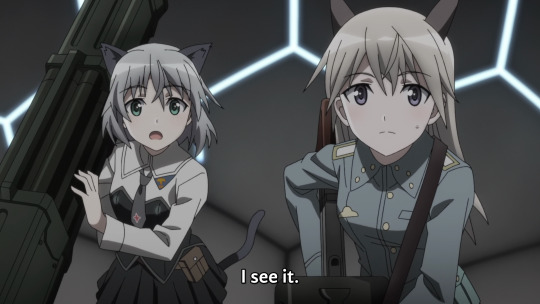
You know the shit’s hit the fan when Sanya, of all people, does this.
Oh, and let’s not forget: it was Eila and Sanya who finished off the dome! I’m not sure why everyone else decided to just fly off, but these two have their backs.

Shirley and Lucchini were a solid team. I liked how each of their personalities shone through in their mannerisms and dialogue, with Shirley being calm, perceptive and responsible, as well as looking out for Lucchini. She also made a good guess at Wolf’s hiding place.
Lucchini, meanwhile, was her adorable hyper self, chafing at the narrow tunnels which prevented her from bouncing around, and later, gleefully taking out one Neuroi tower, only to realize she was shooting at the wrong thing, and being utterly unconcerned as she switched targets. Nyroom! She’s such a playful kid.
I also really liked it when Wolf was running away, and Lucchini immediately looked to Shirley to chase it, but Shirley realized she couldn’t catch it from that distance. She’s come to understand her limits over the course of the series, which pairs well with her increased sense of responsibility in RtB.

Lynne and Perrine were once again the support squad, looking out for Shizuka and later on being quite attuned to anything regarding Yoshika. Unfortunately, they didn’t do much else of note, but that’s been a bit of a pattern for them since Episode 8. Either way, I’ll save my thoughts on that for the full season review. (Yes, I’m going to rant about the season in its entirety next. No one is surprised.)
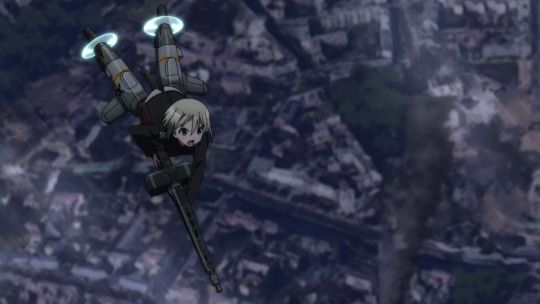
Erica mostly fell into the same support role as Lynne and Perrine this episode, but she did make the highly useful observation of the anomaly in Germania: the big central building that hadn’t been in the plans. And of course, she was one of the determined Karlslander Witches who chased Wolf at the end, limits be damned.

Hey, while we’re on this pic: I’m pretty sure Mio has spent more time with Ursula than with Minna this season. How crazy is that?!
Mio was also here. I’m sad that we didn’t get a Mio Laugh, not even one at the end. I did enjoy how concerned she was about Shizuka’s well-being though; Mio is like Trude in that she’s quite married to her job (she’s even worse about that than Trude), and so her personal feelings can sometimes end up left behind. But she was still doing everything she could to help her friends, and she was genuinely terrified when she realized Shizuka was about to do something dangerous.
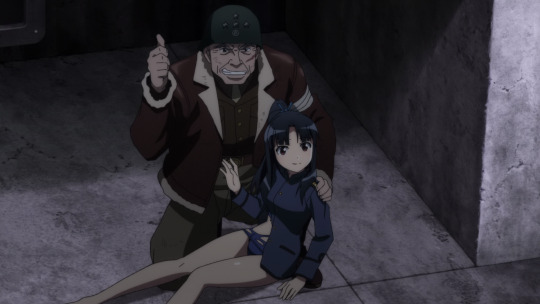
Before I forget, I even have to give a slight nod to Patton. He was good in this episode! Even though he loaded up his revolver, he never actually ended up using it; instead, he was a good supporting character. Even his “GODDAMU” was endearing!

Last but certainly not least, Minna and Trude were, again, excellent. I really loved how they worked together this episode: forming a united front when they told Shizuka she had to stay behind (like two parents telling their new kid to do what’s best for her, ha), and Minna using her reasoning and magic to navigate them through the tunnels while Trude smashed stuff.
Ah yes, Trude. Lovely, lovely Trude. When I wrote about Episode 11, I expressed bewilderment at her sudden suggestion of using the underground tunnels. How did she come by this information? Why did Minna not know? But Episode 12 had my back; Erica asked her about it almost immediately, and as it turned out, Trude had the most adorable reason of all time OMG:
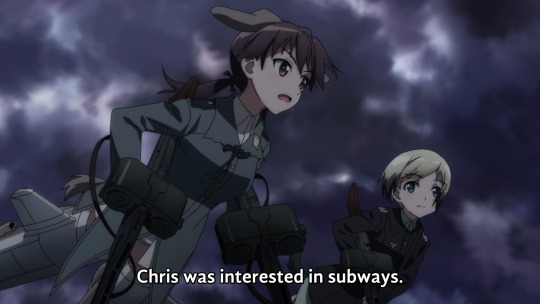
All is forgiven, show. All is forgiven. The fact Trude learned everything about a subway system in a city Chris never even lived in, just to engage with her sister’s interests, is so downright cute and awesome that my love for her has once again increased to previously unimaginable levels. And she memorized it all so damn well that she planned out an entire route into the dome for them! This is the best thing ever!

I was also so, so happy for Minna at the end! In previous seasons, it was always Yoshika who dealt the final blow to their antagonist, but here, Yoshika only prevented Wolf from running away. It was Trude and Erica who pierced its defenses, and it was Minna who went in for the kill. Not only is this amazingly cathartic for her, it’s also something Minna 100% earned in this season. Episode 9 did so well in showing us how badly Minna wanted this, to secure victory for her girls and for herself, to the point where she disregarded her own views on self-sacrifice. And now here she was, maybe in the last sortie of her career, and she received the sweetest reward of all.
...Except the promised coffee in Berlin, which we never got! But that’s okay; this episode already did so much in its runtime, I can’t fault it for not showing us something that would take some time to happen.

Instead, we got something equally satisfying, and something I loved about the ending: it showed us everyone working hard to rebuild Berlin after the battle. RtB has been so good at details, at continuity and consequences, and here, we see that life moves on. Berlin is in ruins, and it’s going to take a lot of elbow grease to get it and the rest of northern Karlsland back into shape. But with people returning and the 501st doing everything they can to help, reconstruction will surely succeed.
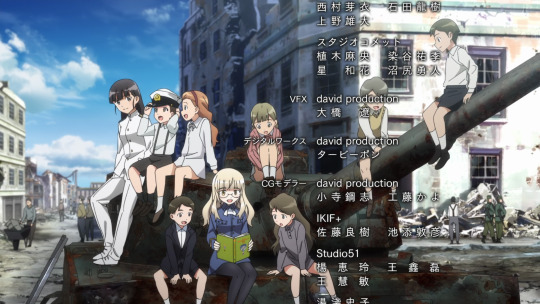
And Perrine will one day conquer the world with her army of adopted children!
Life also moved on in a different way. As it turned out (or maybe I just forgot about this?), Wolf was one of two hives in Karlsland. The other one is located somewhere in the south, and thus, the 501st continues their battle for peace. I wonder if this means we’ll get more 501st content down the line? It hasn’t been ruled out, and it’d be amazing to see where these girls go next. (I demand more coffee scenes!)
#strike witches#road to berlin#funnily enough: there's one continuity error in this episode#RtB's usually so good at preventing this (except when that Neuroi tried to ram Lucchini in Episode 4)#anyway: when Trude punches through the wall into the dome's underbelly she's only carrying one gun#but no one else is carrying it for her#and pretty soon afterward she has two guns again#maybe her butt really is a pocket dimension!
6 notes
·
View notes
Text
Things I love about I Am Not Okay With This
The characters are all depicted as the absolute gremlins that high schoolers are, giving actual high schoolers relatable characters, and older audience members characters that they can look st and go ''yep, that's about the level of chaptic disaster I was in high school." They are awkward, emotional messes of teenagers who aren't conatantly doing interesting, edgy things and who use the phrase 'we sixty-nined and everything' to "prove" they had sex. Also, they're not sexualized (which should never be a thing for teens, and the fact that this is common in other shows is incredibly unsettling).
When Sid says she lives in a shitty town/the show attempts to portray her family as poor, this is actually shown to be a thing. The characters live in small houses without/unable to afford amenities like air conditioning (at one point Sid and her mom are annoyed by the house being hot, and AC is never brought up as a solution), Sid walks what looks like at least a mile, maybe a couple, to and from school, the only teen with a car isn't actually supposed to have it, and the teen characters are either expecred to help run errands because they are the only ones with the time to, or left functionally self-sufficient. It's made clear the characters aren't able to afford many nice things, and the plot doesn't forget about that when it might be more convenient/make them look cooler. Essentially, the show accurately portrays its characters' economic situations rather than doing what some teen shows do with the whole 'yes I live in a small, poor town and I'm struggling very much... anyways now I'm never going to wear the same outfit twice in the emtire show and I have a very expensive car'.
Sid being gay is just a thing. Her sexuality is explored in the 'do I like my friend, and does my friend like me back' way, not in the 'OH GOD I'M GAY' way, which is nice because there aren't a lot of narratives where the character just happens to be gay and it's not a huge thing. However, the show also doesn't avoid confronting homophobia in plot-relevant ways, and Sid's narrative about struggling with her sexuality is tied really nicely into the premise of 'teen whose life is already an emotional disaster (including said sexuality struggles) that she's struggling to handle now has to learn how to get her shit together so she doesn't activate her superpowers which are triggered by intense emotions'
Sid is a flawed character. She's irresponsible with family-related things, handles her anger badly, can be mean to her mom, and often doesn't think things through. She's also a likeable character. She cares about her friends, wants to protect her little brother, is sometimes witty, and as time goes on, handles aknowledging her mistakes really well. And her flaws are shown to come from serious emotional trauma (losing her dad, discovering her powers, etc.), which doesn't excuse her being a jerk to people, but does create empathy.
Sid doesn't tell Standley why she doesn't like him ronantically/sexually, because she doesn't have to. Unlike so many other works of fiction, the show doesn't perpetuate the extremely harmful idea that someone has to justify their lack of attraction. It doesn't matter that she's not into him because she's gay - she's just not into him, and that's all that meeds to be said on it.
Stanley's reaction to Sid not being into him is entirely respectful. He's confused, because he's not aware of the whole 'Sid realizing she's not into banging dudes/is into banging girls thing after she and Standley banged and she kissed Dina' thing, and sad, but he never attempts to pressure her into dating him.
The show escalates things REALLY WELL. It starts off just letting the audience get to know the characters, establishing who they are and what thwir lives are like, and creating various plot points/tension based around interpersonal drama. Then it slowly introduces Sid's powers, then her mysterious stalker, then delves into the mystery of exactly how she got her powers. Also, there is as yet very little explnaation/answers, just enough to keep the audience om the edge of their seats, and I love that.
THERE ARE SPOILERS IN THIS BULLET POINT, BEWARE. When Sid realizes her diary is gone and everything on general is going to shit, she 1) acknowledges her mistakes, apologizies for them, and attempts to make amends, and 2) decides that the only way she's going to be able to handle thhngs well is to just... stop worrying. Obviously, it's not quite that simple, but it's made evident that this isn't a snap decision; this is the culmination of her character arc where she's gradually gained confidence. The costume design choices are also excellent here, with the t-shirt replacing her usual sweater/hoodie being a fun way of symbolizing there's a weight off her shoulders, and the whole thing is really satisfying to watch after seeing this character go through so much shit.
THERE ARE EVEN MORE SPOILERS IN THIS BULLET POINT, BEWARE. The show doesn't shy away from horror. They could have had Brad just drop dead or something, but instead they LITERALLY made his head explode. And because of all the effort that got put into the buildup, it's a fuckig glorious payoff with excellent shock value. If you want to build up a bunch of suspense and then give your audience an action-packed sequence that releases it, this is how you do it.
1 note
·
View note
Text
Ghost Stories Review

“Do you believe in evil, Professor? I didn't, until that night.”
Famous sceptic Professor Philip Goodman is tasked with debunking three unsolvable paranormal cases, but could not predict the chilling path this would take him down.
Ghost Stories is based on the smash hit play of the same name, and changes very little from the original in terms of plot and scares. The film follows Goodman as he investigates the three cases, opening each with an interview before showing the audience exactly what happened. The setup works quite well initially, with the anticipation built up wonderfully as the audience waits with baited breath for each interview to end and the scares to begin. There’s also something strangely comforting in the predictable formula, like the giddy feeling of fear you get when someone starts telling ghost stories at a sleepover.
Yet just like a friend telling you a spooky story, the actual scares can be pretty amateur. Ghost Stories is an expert in generating tension, in dragging out the time between scares until you think you just can’t take it anymore. The payoff often seems to be somewhat of an anti-climax, however, with the scare not nearly as frightening as the preceding wait. The actual telling of the stories remain fantastic, with a real atmosphere of unease generated. Martin Freeman, Alex Lawther, and Paul Whitehouse all sell their performances convincingly, especially Whitehouse as the bitter night watchman. The makeup and physical performances of some of the characters are also highly unnerving. It’s when it comes to the big scares when Ghost Stories fails, unable to clinch success in those important moments.
The camerawork was also surprisingly good. As a translation from a stage play, elements that are only used in film could have been neglected in favour of preserving the original in its entirety. Yet the different shot techniques used in each tale make the three feel fresh and distinct. The second, for example, makes good use of close-ups, emphasising the manic look on Lawther’s face. The third, set in the lavish home of father-to-be Mike Priddle, uses a seemingly endless continuous shot to glorious effect. Travelling with Mike as he goes to investigate the strange noises in his home, the camera refuses to break away, heightening audience nerves to an almost unbearable point.
Ghost Stories counterbalances its fear, however, with a rather ridiculous sense of humour. With a very The League of Gentleman vibe, the brief comic moments are the perfect remedy to unfulfilled tension. Breaking a period of suspense with laughter can be effective in small doses in horror films and, especially given the lacklustre scares, the jokes work really well here. Lawther’s segment especially achieves that difficult balance between horror and comedy, with the nervous energy of his performance an ideal way to deliver the jokes. The style was also very British, with a few jokes specifically aimed at British audiences, which may be lost by other viewers.
While the humour lands, the twist ending is not so successful. The final scene, in which all the characters make their curtain call appearance, seems too neat. You can almost imagine the writers patting themselves on the back as the screen fades to black. One also can’t help but feel that the fate that befalls the protagonist is rather undeserved. The end product is simply not as smart as the writers make it out to be, finishing up what was otherwise a relatively fun movie on a rather dull note.
Ghost Stories is like the rickety ghost train at an amusement park; it’s fun and spooky enough, but there are no significant scares and you’ll forget about it five minutes after you get off.
2.5/5
7 notes
·
View notes
Text
Star Wars Rebels: “A Fool’s Hope”- Review

A climactic fight for survival begins in the penultimate episode of Star Wars Rebels. (Review Contains Spoilers)
youtube
With the secret of Lothal out, Ezra sets his sights on ridding the planet of the Empire once and for all. In the process, he enacts a desperate plan to capture Governor Pryce and bring together all the allies he can.
From its opening sequence, there is a sense of finality to “A Fool’s Hope.” Although even by its conclusion, there is still clearly a great amount of time and content to cover, writers Henry Gilroy and Stephen Melching help to create an atmosphere that feels conclusive. Much of this comes from the inspired choice to bring in disparate parts of Rebels supporting cast. Yes, we finally get to see Alexsandr Kallus and Rex again, but it is even better that they are joined by the likes of Gregor, Wolffe, Hondo, Melch, and Ketsu Onyo. Even if not all the members of this group are given that much to do and using Ezra as a catalyst doesn’t make sense for some characters such as Ketsu, it’s a nice touch to finally get to meet up with some of this team again before the end and see their actions have meaning. In particular, seeing Kallus, a former member of the ISB, team up with and trust a free-wheeling pirate like Hondo is played perfectly to comedic effect. We have rarely seen Rebels at its more explosive than in “A Fool’s Hope.” As the remaining rebel forces on Lothal team up for their final action against the Empire, Pryce’s forces unleash an onslaught of Stormtroopers and attackers. The result is a sprawling and multilayered battle sequence that is perfectly rendered and directed with a great eye for geography and choreography by directors Dave Filoni and Saul Ruiz. Filoni and Ruiz craft a sweeping digital camera that often tracks in and out of combat and the result turns a small skirmish into desperate fight to the death. It also helps that the padded ensemble and extras for both sides give the battle a sense of scope and stakes. Blaster bolts strike targets that mean something and in addition to the flare and fun fight choreography there is an undeniable sense of tension. It also helps that almost every character gets their moment to shine somehow. (Someone should have given Zeb a mobile turret seasons ago.) The same cannot really be said for the episode’s villains. Rukh has an almost laughable ability to fall off ledges and survive to the point where encounters with him begin to lose their edge and excitement.
There also is a certain strangeness to the immediacy of “A Fool’s Hope.” After last week’s mind bending episodes, one would have expected the final battle for Lothal’s future to center more fully on the Empire’s and Palpatine’s interest in the planet’s more unnatural properties. Here, the focus is instead on Lothal’s freedom and the urgency for this fight feels misdirected even if the doubts regarding Ezra’s plans are voiced rather well through Ryder. The fact that Henry Gilroy and Stephen Melching mine the personal history between Ryder and Pryce laid out in Timothy Zahn’s stellar Thrawn novel for character drama is one of the episode’s smaller successes. Having both the current and former leader of Lothal play off one another is a fun power dynamic and would have been a neat relationship to have seen more to this point. As it stands, it makes for a unique narrative for “A Fool’s Hope” and Ryder’s deception and playing of Pryce to the rebellions benefit is a fun wrinkle to the proceedings even if the truth behind it all is a little transparent.
The end of episode payoff of a pack of Lothwolves tearing into Imperial infantry is one of the series’ most cheer worthy moments. There is a certain catharsis to the ferocity of the attack and it functions as a nice conclusion to the wolves appearance in this season. For one glorious moment, Lothal itself fought back against its oppressors. (That joke between Wolffe and Gregor about the return of the “wolf pack” is also a fun moment that functions both as a kind hearted jab at Dave Filoni and a well-meaning callback to The Clone Wars.)
Most of all, “A Fool’s Hope” functions as a rallying cry leading into the series finale. It’s a final stand for hope and an entertaining episode long battle sequence. It’s a bit rough around the edges but for a penultimate fight before the big finale, one could do a lot worse.
Score: A-
9 notes
·
View notes
Text
Attack on Titan Season 4 Episode 6 Review: The War Hammer Titan
https://ift.tt/38QeWeS
This Attack on Titan review contains spoilers.
Attack on Titan Season 4 Episode 6
“A life is a life”
Attack on Titan straddles many genres, but its premiere episode embraces horror tropes more than anything else. That first episode is scary, not just when the Titans first appear, but with the manner in which they terrorize Shiganshina District and devour so much of their population.
It’s a destabilizing and overwhelming experience and the beginning of “The War Hammer Titan” doesn’t only remember the anime’s horror roots, but it delivers carnage that’s even more frightening than what’s seen in Attack on Titan’s first episode. And Eren is the one that’s responsible. The immediate destruction that plays out from Eren’s Titan transformation is horrifying to witness. The fear of the community becomes so palpable that citizens trample over each other and claim more lives in an effort to get as far away from Eren’s destruction as possible.
“The War Hammer Titan” intentionally lingers on terrified faces and the bodies of corpses that needlessly lose their lives as collateral damage. Attack on Titan wants the audience to recognize that there are people behind the lives lost in Eren’s decision. There’s a moment later on where a quiet opportunity for reflection turns into a chance to chastise Eren for his reckless disregard for innocent civilian lives, which includes the death of children. Eren is motivated and involved with what at least has been presented as a good cause (but at this point, who really knows), but his drive appears to have reached a point where the goal justifies massive casualties, which is an attitude that’s absolutely new for Eren. It reflects how he’s become more hardened and it’s honestly fascinating.
Eren kills dozens of people in this episode while he’s in his Titan form and as far as we know he kickstarts just as many revenge origin stories from the suffering survivors. Eren’s officially reached a point where he’s no different than the monsters that killed his mother and put him on this path in the first place. This symmetry has been present in Attack on Titan for a while now and is even explicit in this season’s marketing materials and poster, but that doesn’t weaken how powerful it is to picture a relative of Udo or Sophia stare up at Eren’s Attack Titan somewhere and scream that they’ll “destroy every last one of them!” as the cycle repeats itself. It’s already beginning to happen with Gabi.
After five episodes of setup, “The War Hammer Titan” is largely just the explosive payoff. Willy Tybur’s sister transforms into the amazing War Hammer Titan, which gives Eren some serious competition. There’s been a general style to all of the significant Titans so far and the War Hammer Titan is the first one that feels like a deviation and more like some kind of antagonist from a Silver Surfer comic. As the Titan’s name suggests, it wields an incredibly powerful hammer that’s made out of a strength that’s at least as durable as the Titans. What’s more impressive is that this new Titan can will massive spikes to burst out of the Earth as a secondary form of attack.
It’s stunning to watch this play out, especially after Eren’s Titan gets impaled by one of these spikes and then get his head clean knocked off courtesy of the War Hammer Titan’s weapon. It’s a fast battle, but still one of the most thrilling showdowns from the series. This Titan duel could easily fill the episode, but it’s instead just the first act to an even larger fight that reaches greater heights. Anyone who has ever truly loved this show should have an extremely difficult time to not cheer out loud when Eren signals Mikasa to attack with Thunder Spears and the rest of the Survey Corps. That’s right. Mikasa and the freaking Survey Corps are back.
Out of the many sublime moments that fill “The War Hammer Titan,” the return of Mikasa and other familiar faces is easily the most satisfying. Attack on Titan’s restraint over featuring its primary characters makes their surprise assault here carry even more of an impact. The audience is kept in the dark that all of this has been going according to Eren’s plan and it effectively creates the same terror and tension that’s felt within the Marleyan citizens, even if Eren actually has all of this under control.
Read more
TV
Attack on Titan Season 4 Episode 5 Review: Declaration of War
By Daniel Kurland
TV
Attack on Titan: “No One is Safe” in Final Season, Stars Say
By Daniel Kurland
It’s surprisingly cathartic to hear the zip of 3D maneuver gear as the Survey Corps begin to soar through the air and provide backup for Mikasa and Eren. Mikasa gets an introduction that’s worthy of how bad-ass she’s become over the years, but it’s also gratifying to see Jean, Connie, and Levi seamlessly pull off a mission like they’re some anime Ocean’s 11. However, it’s the moments where the Survey Corps come face-to-face with Gabi and Titan’s new breed of characters which hit the hardest. This season’s structure is already beginning to pay off whenever the worlds of Eldia and Marley crossover and collide.
The abnormalities that surround the War Hammer Titan are the biggest obstacles for Eren and the Survey Corps. Their precise strategy doesn’t work as intended since the Titan’s human doesn’t appear to occupy the nape of the neck, but is instead underground near the feet. Another fascinating revelation around this Titan is that the user is linked via a fleshy umbilical cord that’s straight out of eXistenZ or Videodrome. There’s no time to appropriately deal with this new information, but it’s easily one of the coolest/grossest Titan developments in some time.
The combat in “The War Hammer Titan” is highly suspenseful, but it transforms into an epic free-for-all between multiple Titans where everyone tries to eat each other in order to take over the dominant abilities. It’s an act that would look completely bizarre at the start of Attack on Titan, but it’s crazy how this strange Titan ouroboros is now completely logical. No one gets to consume their Titan targets in this episode, but as even more Titans enter the fray there are suddenly even higher stakes present.
On an aesthetic level, there were initially some reservations over MAPPA taking over animation duties from WIT Studio for Attack on Titan’s final season. Any differences so far have been largely negligible, but it’s also been a reasonably calm and contemplative season up until this point. “The War Hammer Titan” is nearly entirely action as scenes of combat, chaos, and destruction play out. It’s the first time where the audience gets a better idea of MAPPA’s ability to handle Titans’ more intensive moments and this is fortunately an episode that looks fantastic.
Mikasa’s surprise attack is a little CGI-heavy at moments, but it doesn’t dwarf the action. The battle between the Attack and War Hammer Titans, the Survey Corps’ siege on Marley, and the constant panic that’s present in the citizens all come to life in a satisfying manner. The animation is able to match the gravitas of these moments and there’s a grandiose score that amplifies these pivotal scenes even more.
Attack on Titan is now in that amazing, glorious sweet spot that’s only rarely achieved by a high-quality piece of programming after it enters its endgame. Suddenly every new episode immediately becomes the series’ best installment. Last week’s “Declaration of War” defied expectations in every regard and set a new high mark for Attack on Titan, but it looks like the next handful of entries are all going to operate at this level after considering the events in “The War Hammer Titan.”
There are literally close to a dozen individual moments here where if just one of them were to occur in an episode it would become an all-time classic, but instead “The War Hammer Titan” practically trips over its repeated moments of immense awesomeness. This episode doesn’t just maintain the momentum that “Declaration of War’ established when it threw down the gauntlet, but it increases the tempo in a manner that’s almost exhausting. “The War Hammer Titan” is the type of Attack on Titan episode where you need to repeatedly remind yourself to breathe because you’ll be holding your breath in anticipation from the moment the installment begins until when the credits roll.
“The War Hammer Titan” is a masterpiece that brings the band back together, which leads to some extremely enjoyable and long overdue teamwork from old and familiar faces. The note that “The War Hammer Titan” concludes on is the biggest thing that’s ever been attempted in the series and it somehow makes the final moments of “Declaration of War” seem tame in comparison.
cnx.cmd.push(function() { cnx({ playerId: "106e33c0-3911-473c-b599-b1426db57530", }).render("0270c398a82f44f49c23c16122516796"); });
Eren and company have fought in plenty of battles and faced undesirable odds, but there’s a newfound urgency to this battle. Both sides know that their time is nearly up and after episodes of Attack on Titan throwing more gasoline into this fire, it’s now finally ready to enjoy the flames. This season has put in the work to humanize both sides of this war in a way where every casualty will be felt and any winners are set to have their hands stained in blood.
The post Attack on Titan Season 4 Episode 6 Review: The War Hammer Titan appeared first on Den of Geek.
from Den of Geek https://ift.tt/3qnTNhU
0 notes
Text
My Thoughts on The Sons of the Dragon
I never thought I'd be saying this but overall I was disappointed with TSOTD despite the new material. While some parts of it were quite good by and large the majority of the text felt underwhelming to me, particularly because what we got in Book of Swords is an unedited first draft. As a result, there are typos, plot holes, issues with dates as well as lineage (seriously the Hightower family tree is a mess) and name changes (I much prefer Robar over Rogar personally).
Aegon I The use of slander is highly uneven. IMHO it would be better to either remove it entirely or use it to the fullest extent and make Maegor's historiography genuinely convoluted. To use one example: Why is the episode with the cat at the age of three most likely slander when the incident with the horse and stable boy at the age of eight is treated as fact?
There was barely any mention of Aenys's possible bastardy and absolutely no mention of Maegor's possibly magical conception. That sucks.
It's interesting that some people thought Maegor came before his niece in the succession and others after her. A hint at different succession laws prior to the reign of Jaehaerys I?
So on top of the Faith having an army and an independent court system it had tax exemptions? Cool. That brings it much closer to the RL medieval Catholic Church in terms of wealth and worldly power.
One god with seven faces! Hah! The High Spider's work endures @racefortheironthrone!
There's no mention of who Alyssa Velaryon's Targaryen mother was. Darn.
Aenys I What happened to Ronnel Arryn's wife and did they ever have any children? I wonder what the lands, offices, and honors Aenys and Maegor bestowed upon their favorites consisted of? After all the Crownlands are pretty paltry size-wise.
I am still sore about the fact that there wasn't a Dornish War between 37-39 AC. The setup was perfect for one. Maegor as Hand attacking Dorne in revenge for the Vulture King after convincing dreamy Aenys of how glorious it would be for the sons of the Conqueror to complete his life's work by bringing Dorne under the aegis of the Iron Throne only for Aenys to suddenly call it off on a whim or because of a peace offer from Deria reminding him both that his mother died fighting them and that they had feasted together as friends not too long ago. At the very least we should have gotten some details about the relationship between Aenys and Maegor, especially in light of the fact that Maegor served as Hand for two years during which time the realm was at peace somehow.
Why were Aegon and Rhaena besieged in Crakehall Castle by the Poor Fellows when they had Dreamfyre with them? Honestly, the best solution IMO to the whole Westerlands conundrum would be for the Poor Fellows to launch a night attack while Aegon/Rhaena are on their progress, resulting in the death of Aegon's original dragon and a wounded Dreamfyre fleeing. (Btw, I did NOT come up with this idea just to be clear.)
There's no mention of Visenya having poisoned Aenys possibly. Did GRRM write material on Aenys and Maegor for TWOIAF that didn't make it into TSOTD?
I really hope we get Maegor's eulogy for his father and Alyssa's dirge for her husband in Fire & Blood: Volume 1 because that would be so cool.
Did anyone else get the feeling that if Aenys had been king in a time of peace after Targaryen authority had been cemented he might not have done too bad?
Maegor I Dick Bean and Bernarr Brune were one of the few heartwarming scenes in the whole story even if it is a case of good men in service to a bad cause.
Why would Maegor pick a super-fat knight (Ser Guy (the Glutton) Lothston) for one his champions during the Trial by Seven?
I wonder what the scriptures of the Faith have to say about a holy man bearing arms given Ser Garibald of the Seven Stars as well as what is its stance on suicide because it doesn't appear to be a major sin unlike in RL.
I wonder where Blackhull is located (probably the Crownlands if I had to guess) and whether it is a town or castle (personally my money is on the former).
We got a good Bracken and a brave Frey for once! Yay! (Now all we need is a nice Florent and a decent Peake. You can do it GRRM!)
Why is there no mention of Maegor possibly being changed by his head injury and coma a la Baelor I? Apart from the episode with the cat and horse Maegor seems much more in control of himself and sympathetic compared to after his Trial by Seven. The dude fought pirates and robber knights on top of winning tourneys and melees for crying out loud!
Where exactly is the Great Fork of the Blackwater located?
Why don't we hear anything about tension in the Faith while Dorne was independent and why don't we hear anything about Dornish smallfolk joining the Poor Fellows on the march?
Apart from Stonebridge and the Great Fork we don't get any other pitched battles, which is super disappointing to me, as is the fact that somehow the Stormlands and Vale both sit out the entire conflict. The latter has an entire chapterhouse at Gulltown! Seriously, what the hell were they doing all that time?
Given that the chapter of the Warrior's Sons stationed at King's Landing numbered 700 and the chapter at Stoney Sept 200 I think it is safe to say that the Faith Militant is a lot smaller than I originally thought.
Grand Maester Myres was a stupid rehash of Grand Maester Gawen who should seriously have been given a different death or replaced with Hareth.
Why are female characters like Poxy Jeyne and Patrice Hightower called witches for almost no given reason? Seriously, the misogyny in TSOTD is kind of OTT. On the other hand it was nice to learn that witchcraft and heresy are sins in the eyes of the Faith.
The buildup to Maegor's attack on Oldtown was awesome.
Maegor's character as king is really inconsistent. Sometimes he's completely crazy and at other points remarkably reasonable. (Allowing the Warrior's Sons of Oldtown to take the black, latter allowing Poxy Jeyne's Poor Fellows to take the black too, giving the Faith Militant half a year to surrender after taking Oldtown, only moving against his nephew Aegon after the latter directly challenged him, reconciling with Ceryse, initially refusing to believe that Alys had been unfaithful, and not wiping out whole families after the Battle Beneath the God's Eye.)
Is it just me or does Maegor outlaw the Faith Militant three times?
I wonder what are a wedded wife and queen's traditional rights, incomes, and privileges. Also, why don't we ever hear of any queens exercising these powers?
Why didn't Prince Aegon and Prince Viserys have their own dragons when their older and younger siblings all did?
How the hell did Quicksilver get to the Westerlands all the way from Dragonstone? (One explanation a fan came up with that I really like is that either a Velaryon Kingsguard or a bastard son of Aenys named Aemon bonded with Quicksilver and took her to the Westerlands, where he died defending his trueborn kin, thus allowing Prince Aegon to claim his father's dragon for himself.)
Regarding the Battle Beneath the Gods Eye: What is up with GRRM's obsession for a hundred casualties? Also, Prince Aegon was an idiot. One does NOT simply fly into the jaws of Balerion.
Furthermore, why the hell is a bastard from Barrowton fighting for Prince Aegon? Wouldn't a Manderly make more sense? (On that note I must confess that I was really hoping for Maegor to have made a Bolton a member of his Kingsguard. Oh well...)
It's interesting that Maegor didn't like being called "the Cruel" or "kinslayer". Almost as though he actually had a conscience. Heh.
The fall of House Harroway is brutal. Seriously, GRRM has one bloody imagination.
So belief in the curse of Harrenhal started with the Harroways. Neat.
Maegor decreed that Harrenhal should go to the strongest of his men because he grew fed up with people asking him for it. Hah.
Apart from the Harroways Maegor doesn't exterminate any other houses the way TWOIAF says he did, which is weird.
Poxy Jeyne was pretty cool for an 8-bit character. On the other hand that makes the other characters' lack of depth stand out even more. Who are you Ragged Silas? Who are you Dennis the Lame? I don't know.
More child-brides in the form of Lord Celtigar's thirteen and twelve year-old maiden daughters. Ugh. Why GRRM? Why do you keep doing this when you insist the opposite is true? Especially in this case there is no excuse for making them this young given that we know literally nothing else about them.
I swear Jeyne Westerlings are cursed. Elinor Costayne on the other hand is one fiery woman.
Given the way Tyanna's death is presented she might actually have poisoned Maegor's other wives! On the other hand, prior to Tyanna he never even conceived a child to begin with.
Apparently Houses Darklyn, Massey, Towers, Staunton, Bar Emmon, Buckwell, Rosby, Stokeworth, Hayford, Harte, Byrch, Rollingford, Bywater, and Mallery all together barely command 3600 men and 400 knights, which is weird. If the Masseys are that weak despite ruling a whole damn peninsula how the hell did they give the Storm Kings so much trouble before the conquest?
Maegor at the end of his reign doesn't appear at all to be broken or depressed the way he is described to be in TWOIAF, which makes the whole possibility of him having committed suicide after descending into madness much weaker, which is very weird because his reaction to Alys's stillbirth sets up what happens with Jeyne Westerling and Elinor Costayne very well without any actual payoff.
How were Vermithor and Silverwing able to hide in Storm's End when Rhaena couldn't hide Dreamfyre in the Westerlands?
On that note, how the hell were Jaehaerys and Alysanne able to hide in Maegor's backyard at Storm's End when Tyanna found Rhaena's twin daughters halfway across the continent?
How is Vermithor the oldest and biggest dragon if Dreamfyre was being ridden by Rhaena since she was twelve?
How in the hell did Lord Robar think Vermithor and Silverwing would be enough to challenge Balerion the Black Dread?
Maegor ruled for six years and sixty-six days. That's almost as funny as one of his champions during the Trial by Seven being Lord Lucifer Massey.
Jaehaerys I ascended on the eve of a possible Dornish invasion, which might help fix the whole Dornish Wars conundrum TWOIAF gave us and provide GRRM an opportunity to heavily feature the Stormlands. Cool!
Why was the Faith's independent courts enough of a big deal for Jaehaerys I to deal with the issue when it never came up during the reigns of either Aenys or Maegor?
We have possibly three new houses: Poore, Bush, and Whistler. Great?
I was really hoping for more members of the Kingsguard to show up and whatever happened to Ser Raymont Baratheon after he saved Aenys's life?
Even though it's been two whole days since I read the text I still can't get out of my head the image of a depressed Maegor sitting atop the Iron Throne with the head of Grand Maester Desmond in his hands.
24 notes
·
View notes
Text
Okay, maybe I do have something to say that I haven’t said yet.
Maybe the most underrated moment of the episode, to me, is when Q and Eliot fondly bring up Margo in the second week, and there’s a little conversation that’s something like: Can you imagine Margo putting up with this tedium? Margo would’ve blown it up by day two. And I really cherish that little bit of almost throwaway dialogue, because it points out to me that the Mosaic/Time Key really is, more than anything else in the show, their quest, their mission. As a wise person once said (maybe @yourtinseltinkerbell I think? Honestly I can’t recall!) The Magicians is a show about boys who are soft and sad and gay and in love, and women who are strong enough to kill gods -- which I think is something that, if you love this show, you by necessity love about it. But the nature of an adventure serial/genre tv show like this is that most of the plot is driven by conflict and action and feats of daring and whatnot, which is why the female characters tend to flourish and triumph and all that -- they become kings and deities and there’s much talk of We Know Not the Full Reach of Their Great Potential. And Idon’twannatalkaboutit when it comes to how the male characters’ arcs disproportionately come out in the end, so let’s move on!
The Mosaic is a task that a traditionally strong, heroic character would fail at -- it’s tedious, it’s infinite, it’s physically constrained, it’s cerebral but enigmatically subjective. It’s an unsolvable puzzle that’s only solved by devoting yourself to the practice of it for life -- so it’s less like an Adventure Quest and more like -- becoming yourself (being him is who you are...) or like raising a family or like being an artist. And it’s not easy for Quentin and Eliot, either! In the beginning, Q is frustrated and impatient and lashes out, while Eliot is pushing himself through it with the help of an explicit lack of sobriety. They find these moments of communion and intimacy under the stars, but they still fight later on, they’re still tested by these limitations imposed on them by the quest.
The tension doesn’t really break until Eliot says live your life here -- and that’s a deeply ambiguous scene, and I don’t think anyone really knows exactly what it’s all about, but however they get there, this is where they arrive. It’s Eliot’s breakthrough, whether at the time it’s sincere or sardonic: they do have to live their lives. That’s the answer. And once they come to some acceptance of that -- once they’re embedded deeply enough to think in terms of a life here -- the next thing that happens is marriage and a child and the blossoming color and detail that blooms up around the cottage as they montage their way through their adulthood. And the payoff to that is not immediate -- not at all. It takes 50 more years of life and practice and fidelity, of showing up in spite of the labor and the tedium of it, for Quentin to win the key -- and it takes decades after that for the Time key to complete its work, to save Fillory from the Beast, to travel into Margo’s hands to save Quentin and Eliot.
And what’s glorious to me about the whole thing -- one thing that’s glorious to me, because all of it is, really, every minute I’ve spent thinking about this over the past three years has only paid off more for me -- is that we’re never really told the answer to the puzzle. What is The Beauty of All Life? Is it the relationships they formed there, the friendship and the romance and the fatherhood? Is it the patience itself, the labor invested in an impossible task, hoping for a miracle? Is it Eliot’s death specifically -- is the beauty of life that you leave behind a life you can be proud of, a life that mattered to the people who knew you? There are fifteen colors of tile in the Mosaic, but it’s the gold tile that solves it, the one that the earth only yields up after they’ve proven themselves willing to give their whole lives to the quest, the full measure of patience and practice and devotion, holding nothing back.
We really don’t know. Even after watching them complete the quest together (I take my lead from Quentin -- he placed the final tile, but they completed the quest together), I don’t think we’re definitively told what beauty is, what life is, and I love that. We don’t know the answer, but we do see the process: the moral of the Mosaic, as I currently read it (check back with me in a few more years...), is that the beauty of all life reveals itself to people who come at the work of living with that kind of lifelong devotion, who live their lives in a way that circles around that question, that quest, again and again -- just like the visual metaphor of the overhead shots through the montage, where we see them circling constantly around the Mosaic, putting in the work.
And I just think it’s so uniquely true to their characters, to this heart-centered and ultimately resilient way that at their best they both approach the world, the ability to fail and lose and weather frustration and just keep coming back to the task and do it all over again. They’re right to say that Margo couldn’t do it, that any kind of typical hero (whatever that means) might not be able to find the humility and acceptance to spend a whole lifetime committed to consistently failing, as many times as it takes, at a quest with no guarantees (like making great art, like being truly happy, like becoming fully human through the relationships that form you).
When Eliot receives the quest originally, he’s told that what it requires of him is vulnerability, and that to me is what the Mosaic is all about -- it’s a quest that rewards vulnerability and acceptance and, ultimately, mortality itself -- it’s a quest that Eliot only succeeds in because he dies laboring at it. And what’s unique and special to me about these two characters is that they flourish under this vulnerability, this acceptance that hope itself might be all you get, but that actually can be enough to fill a lifetime with. It was pretty clearly implied to be the happiest time in either of their lives, and that wouldn’t necessarily have been the case for any other pair of characters. I love that at least one time, the narrative of this show found a way to let these soft, sometimes sad, deeply loving people save the world through and because of their vulnerability. That’s meaningful to me in ways that I’m still peeling back all the layers of, years after the fact. If The Magicians (Syfy) gave me nothing else, this episode is the gift it did give me.
FUCKING WHAT, Y'ALL?!? Was nobody going to TELL me today is the third anniversary of A Life in the Day airing? I'm not prepared, I don't have a speech or recs or porn or ANYTHING, it's total bullshit!
Anyway, happy three years since the reason I got myself embroiled in the most surreal television show and the greatest fandom Of All Time. I love everyone in this bar -- make art, eat peaches, and fall in the kind of love that makes basic cable anxious, my friends.
214 notes
·
View notes
Text
Movies I Liked in 2018
Every year I reflect on the pop culture I enjoyed and put it in some sort of order.
I may have seen more movies in theatres in 2018 than any other year of my life, thanks to MoviePass during its unsustainable height and now AMC’s A-List. Even so, aside from some genuinely classic new blockbusters, this year’s indie and prestige fare didn’t make as much of an impact on me as 2017’s offerings.
I typically rank 10 films, but this year, due to an abundance of parallels and no clear favorite, I decided to share my recommendations in pairs that might make some interesting Double Features.
Fresh Takes On History
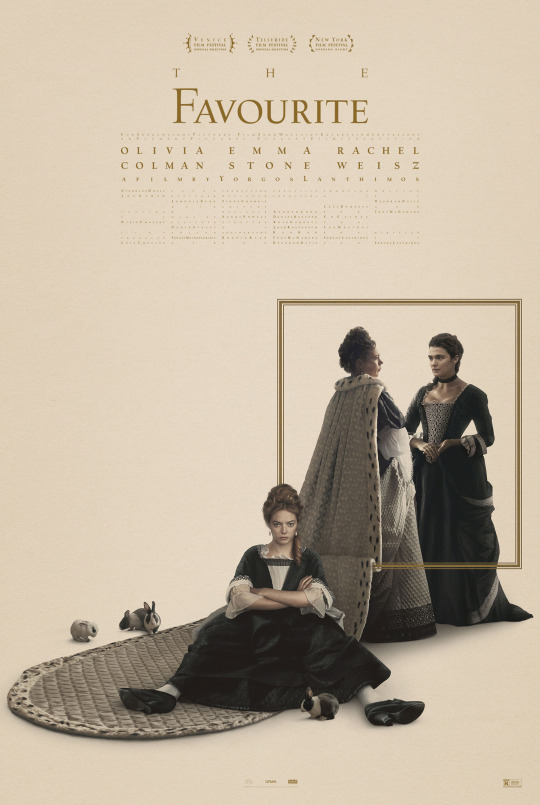
The Favourite
A riveting and ribald take on the costume drama that brings English history to vibrant (and at times, anachronistic) life, The Favourite excels not just through its script and performances, but also through its unique cinematography, using wide lenses to capture entire rooms. The cast is all terrific, led by Emma Stone in arch mode, Rachel Weisz playing manipulative and commanding, and Olivia Coleman as a daffy and indecisive Queen Anne. It’s compelling stuff and far from the genre’s typically stuffy Oscar bait.

First Man
In the tradition of The Right Stuff’s auteur-driven impressionistic history of NASA’s beginnings, Damien Chazelle’s Neil Armstrong biopic eschews easy crowd-pleasing in favor of scenes that put the audience right inside the claustrophobic and frankly, terrifying, cockpits of the experimental airplanes and mission spacecraft that astronauts piloted. Armstrong was known as humble and reserved and Ryan Gosling does a great job of humanizing him with nuanced depth. Claire Foy is his captivating equal as wife Janet, left dealing with the homefront while her husband ventures into uncharted territory. As a sucker for movies about the space program (and a fan of Chazelle’s prior films), this was right up my alley, but I was unprepared for the sheer artistry and realism of the entire endeavor, including its hauntingly beautiful score and POV cinematography.
Gorgeous Cinematography and Radical Empathy

If Beale Street Could Talk
Barry Jenkins’ adaption of James Baldwin’s novel is a feast for the eyes – stunning cinematography, costuming and production design combine to create one of the most vivid films of the year, justly earning its Wong Kar-wai comparisons. The plot bounces back and forth in time, revealing a love story of boundless promise that is interrupted by systemic injustice and institutional racism. Moments of beauty and hope are contrasted with the dehumanizing reality of a criminal justice system that seems to exist merely to beat those out of people. A harsh reminder of how little has changed since the book was written decades ago.

Roma
Alfonso Cuarón is a master filmmaker and his meditation on his own childhood in 1970s Mexico City is spellbinding. Shot in stunning black-and-white, the compositions and tracking shots employed present a uniquely realized sense of place. Although the film is available on Netflix, I had the opportunity to see it screened in 70mm film and highly recommend viewing on the largest screen possible to fully appreciate the beauty of its filmmaking. Of course, the visuals would be meaningless without a story to serve, and Roma showcases the daily life and sacrifices of an indigenous housekeeper to an upper-middle-class family, fully immersing the audience in her world in all its small pleasures and large heartbreaks. An indelible tribute to the incredible strength and selflessness of women and caretakers everywhere.
Marvel Superhero Domination

Black Panther
The Marvel Cinematic Universe continued to expand this year with Black Panther’s title film following the character’s debut in Captain America: Civil War. Look: you probably saw this movie. What is there to say? It’s very very good. The Afrofuturist art direction and costume design is absolutely fantastic. The CGI is kind of weak (my guess is most of Marvel’s resources were devoted to the next film on this list). It works as a stand-alone feature but still effectively ties into the greater MCU, and it serves as a glorious tribute to black excellence. ’Nuff said.

Avengers: Infinity War
The payoff of a decade of interlocking films featuring dozens of characters could have been absolutely terrible. There are probably plenty of people who think Infinity War fits that description, but I am deeply impressed at how deftly the filmmakers handled everything, balancing a lot of plot with winning character moments. The fact that this movie is essentially a hero’s journey from the perspective of the villain is a clever upending of expectations and the ending (for now) is a pretty audacious move on Marvel’s part.
The Hollywood Machine at Its Best

A Star Is Born
The most compelling aspect of the latest rendition of A Star Is Born is the way director/star Bradley Cooper puts the audience in the middle of the action, allowing us to share the stage at giant music festivals, the Grammy Awards and Saturday Night Live, among other venues. It’s the most authentic concert film I’ve seen (probably helps that Live Nation co-produced it). The soundtrack is solid and Cooper and Lady Gaga are excellent in their roles, though I often felt at a remove from them, like watching a series of excellently curated vignettes without fully experiencing their inner worlds. So while I like this film a great deal (and it’s an example of what big studios can do best), it lacks the immediacy and intimacy of 2007’s much sparer indie Once, still my benchmark for “two-artists-making-a-connection-and-bringing-out-the-creative-best-in-each-other” stories (see also: La-La-Land).
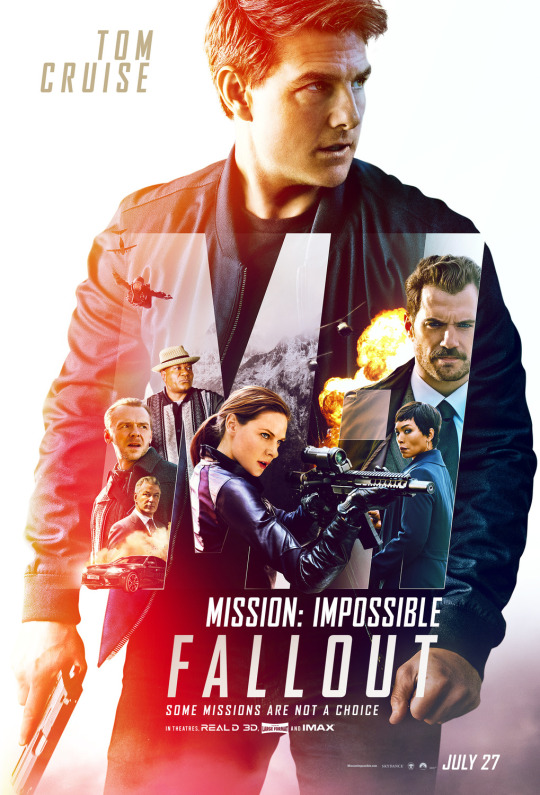
Mission: Impossible – Fallout
There’s a mournfulness to the latest M:I (my favorite action franchise) that pervades the moments between breathless tension and pumping adrenaline. Though character development has never been central to this series, there’s a greater sense here of what Tom Cruise’s Ethan Hunt has given up and the character’s inner goodness. Not wanting to sacrifice even the one innocent person for the sake of millions and willing to expend himself over and over, he is a classic Christ figure, kenosis personified. He may be a cipher, but we see the pain and weariness behind his eyes. Fallout is all the more powerful for it. Oh, and the helicopter chase (in IMAX!): that was badass.
Quirky Tales With Depth
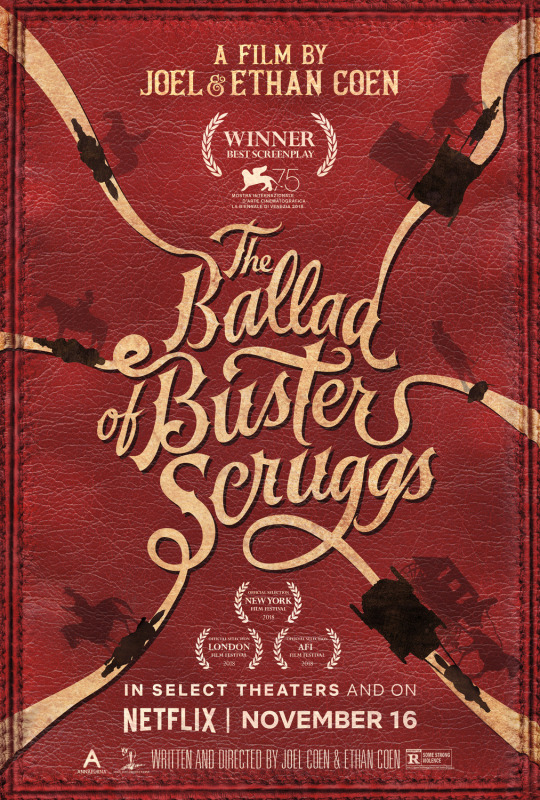
The Ballad of Buster Scruggs
As a collection of standalone Western-themed shorts (originally conceived as an anthology TV show), The Ballad of Buster Scruggs initially feels like a lesser Coen Brothers effort but proves to have a lot of staying power. Suffused with the standard Coen wit and moralistic existentialism, the chapters range from comedy to tragedy and all points in between with no shortage of idiosyncratic characters. The penultimate tale, “The Gal Who Got Rattled,” is one of the strongest and most moving, with an ending that reveals itself to be more complex the more you reflect on it. While the vistas look great on the big screen, this is another Netflix production, so it’s easily accessible and revisitable from home.

The Old Man & the Gun
In the Old Man & the Gun director David Lowry pays homage to 70s-era caper films, putting Robert Redford’s infinite charisma to use in the role of a serial bank robber and prison escapee who could be a latter-day version of his character from The Sting. Based on the true story of Forrest Tucker, the film explores the tension of its protagonist’s draw toward heists and desire to settle down once and for all. The terrific supporting cast includes Sissy Spacek as Tucker’s love interest and Casey Affleck as the detective who puts the case together and becomes engaged in a cat-and-mouse game with him throughout the film.
Like Those? Here Are Some More Worth Your Time:
Innovative Animation - Isle of Dogs / Spider-Man: Into the Spider-verse
Family-Friendly Tributes to Decency - Won’t You Be My Neighbor? / Paddington 2
Environmentally-Conscious Indie Dramas - First Reformed / Leave No Trace
Explorations of Police Brutality Featuring Members of the Original Broadway Cast of Hamilton - Monsters and Men / Blindspotting
0 notes
Photo
@blacksuitofdoom
(Forgive me, I wrote you an essay)
No, I love it actually and it sends me into a flying rage because I love it so much and it could have been far better than the mediocrity it served us up.
To put it better: as a writer (and as a consumer) it’s.... lacking in certain elements of the plot.
The clothing (while certainly prettyish) was off for it being a setting of 1901 (everyone’s dressed victorian 1893-4 instead of early Edwardian). Also I’m not going to lie, the story simply doesn’t make much sense—as someone who is interested in details (particularly this point in history) the shallowness of historical research done into the period’s society baffles and annoys me.
Then there’s the paradox of Thomas Sharpe’s behavior.
In the first act we have this intense (equal parts alarming and intriguing) suggestion of a very mentally warped and psychologically damaged person. But suddenly in the second act he is nothing but a whimpering, teary-eyed (mentally a) child who has never killed anyone and wants everything to be sunshine and roses. It’s unfair because the setup of the character suggested an entirely corrupt (morally as well as mentally) payoff at the climax. Instead we got a sob story we’re supposed to feel sorry for but because the film was (plot wise) so poorly executed nothing exists but frustrated apathy and confusion as to why his character was 180-ed from opening to closing.
Lucille’s character had potential but she was badly written and Edith is just a mess entirely—from daring young woman to stupidly naif little girl in like five runtime minutes. She stinks of 21st century writing pretending to know its way around a Victorian setting and failing left and right by leaps and bounds.
And I’m not even going to mention the miserable and pathetic “love makes monsters of us all” theme they attempted to run with (and which the actors all supported and viewed from a new omanticized lens, which is frankly alarming and in no way fascinating or impressive and speaks to their emotional states imo). It makes NO SENSE in ANY WAY seeing as it had the exact opposite affect on Sir Sharpe (he went unbelievably from monster to humane by the climax, and this discovery of humanity brought about his end). The film’s attempt to HUMANISE and make us sympathise with psychological, emotional, and sexual abuse under the guise of humanity as something flawed and tragic in this romantic gothic scene—NO. No no no a thousand times NO! I’m sorry that will NEVER EVER FLY.
Then there’s the horror that wasn’t horrifying but more pedantic and sleep-inducing because none of it was anything but jump-scares and a showcase for some (brilliant, ngl) special effects. The film could have done WITHOUT the ghosts and been better for it if the writing had been half as good as it could have been.
So no, I LOVE LOVE LOVE this catastrophe of a film. I love the idea that created it and the actors who filled the roles and I AM ABSOLUTELY LIVID over how such a glorious idea was MUTILATED into this swill we were given. This film gives me an unbridled rage because it could have been done differently to make it good, instead of poorly to make it pathetic.
Also I THINK this was the scene Wasikowska and Hiddleston REWROTE a good bit of because they hated said that what was in the script was too flowery and cut the established tension like a dart in a balloon. And you can just feel a whole different aspect of this particular scene compared to the rest of the film. This scene alone (to me) feels as if it’s from an entirely different movie.
Last but not least a LOT of the music annoys me (it’s majority piano and I play the instrument myself so I’m allowed to complain 😂). The best piece is played in the end credits (Edith’s Theme) and it sounds like it comes off another movie as well.
It’s been awhile since I’ve raved over this beautiful abomination and slander so I’m forgetting things and leaving other pieces out. Sorry!






854 notes
·
View notes